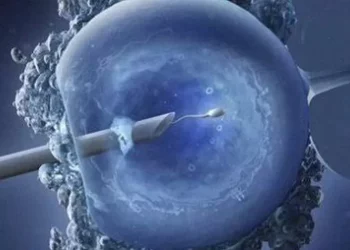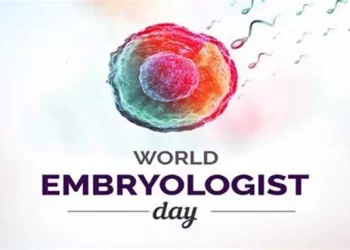Fallopian tubes, also known as uterine tubes, are slender, muscular structures that extend from the uterus to the ovaries on each side of the pelvis. These tubes play a crucial role in the reproductive process by capturing eggs released from the ovaries during ovulation and providing a conduit for their transport to the uterus. Additionally, fallopian tubes serve as the site of fertilization, where sperm meet the egg, initiating the process of conception.
Common Causes of Fallopian Tube Damage
Infections: Sexually transmitted infections (STIs) such as chlamydia and gonorrhea can ascend through the reproductive tract, causing inflammation and scarring of the fallopian tubes—a condition known as pelvic inflammatory disease (PID). If left untreated, PID can lead to permanent damage, including tubal blockages or adhesions that impair fertility.
Endometriosis: Endometriosis, a condition characterized by the growth of endometrial tissue outside the uterus, can affect the fallopian tubes. The presence of endometrial implants on the tubes can lead to adhesions or blockages, hindering the normal function of the tubes and compromising fertility.
Previous Surgeries: Surgeries involving the pelvic region, such as pelvic surgeries, appendectomies, or cesarean sections, can result in the formation of scar tissue or adhesions that may obstruct the fallopian tubes. These adhesions can interfere with the normal movement of eggs through the tubes or impair their ability to pick up sperm, thus affecting fertility.
Ectopic Pregnancy: Ectopic pregnancy, where a fertilized egg implants and grows outside the uterus, most commonly in the fallopian tube, can cause damage to the tube. As the pregnancy progresses, the fallopian tube may rupture, leading to a life-threatening emergency and potential loss of the tube.
Other Risk Factors for Fallopian Tube Damage
History of previous pelvic infections or reproductive tract surgeries.
Engaging in multiple sexual partners or unprotected sexual activity, increasing the risk of STIs.
Delayed diagnosis and treatment of STIs, allowing the infection to progress and cause damage.
Smoking and exposure to environmental toxins, which can impair fertility and increase susceptibility to reproductive tract infections.
Symptoms of Fallopian Tube Damage
Initially, fallopian tube damage may not cause noticeable symptoms. However, as the damage progresses or if complications arise, symptoms may become apparent. These may include pelvic pain, abnormal vaginal discharge, painful intercourse, and fertility issues such as difficulty conceiving or recurrent miscarriages.
Diagnosis of Fallopian Tube Damage
Diagnostic tests are essential for assessing the health and function of the fallopian tubes. These may include:
Pelvic Ultrasound: Ultrasound imaging can visualize the structure of the fallopian tubes and detect abnormalities such as blockages or fluid accumulation.
Hysterosalpingography (HSG): HSG is a specialized X-ray procedure where contrast dye is injected into the uterus, allowing visualization of the fallopian tubes to identify blockages or abnormalities.
Laparoscopy: Laparoscopic surgery involves inserting a thin, lighted tube with a camera (laparoscope) into the abdomen to directly visualize the pelvic organs and assess the fallopian tubes for adhesions, blockages, or other abnormalities.
Hysteroscopy: Hysteroscopy involves inserting a thin, lighted telescope (hysteroscope) through the vagina and cervix into the uterus to examine the uterine cavity and openings of the fallopian tubes.
Treatment Options for Fallopian Tube Damage
Treatment for fallopian tube damage depends on the underlying cause and severity of the condition. Options may include:
Antibiotics: If fallopian tube damage is due to an infection such as PID, antibiotics are prescribed to treat the infection and prevent further damage.
Surgery: Surgical procedures such as laparoscopic surgery may be performed to remove adhesions, open blocked fallopian tubes, or repair damage caused by ectopic pregnancy.
Assisted Reproductive Technologies (ART): In cases where fallopian tube damage severely impairs fertility, assisted reproductive technologies such as in vitro fertilization (IVF) may be recommended. IVF bypasses the fallopian tubes by retrieving eggs directly from the ovaries, fertilizing them in the laboratory, and transferring embryos into the uterus.
It’s essential to discuss treatment options with a fertility specialist to determine the most suitable approach based on individual circumstances and treatment goals.
Prevention Strategies
Preventive measures can help reduce the risk of fallopian tube damage and associated fertility issues. These may include:
Practicing safe sex to reduce the risk of STIs.
Seeking prompt medical treatment for STIs or pelvic infections.
Maintaining a healthy lifestyle, including a balanced diet and regular exercise, to support overall reproductive health.
Attending regular gynecological check-ups for early detection and management of reproductive health concerns.
Conclusion
Fallopian tube damage can significantly impact reproductive health and fertility. Understanding the causes, symptoms, diagnosis, and treatment options for fallopian tube damage is crucial for individuals seeking to preserve their fertility or overcome infertility challenges. By prioritizing reproductive health, seeking timely medical attention, and adopting preventive measures, individuals can take proactive steps to protect their fertility and overall well-being.
Related Topics:
A Comprehensive Tutorial of What Do You Need to Qualify for IVF?
The Challenges of Conceiving After Miscarriage: A How-To Guide



























